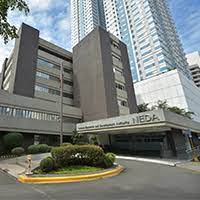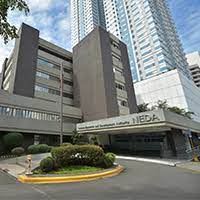
THE Philippine government contracted $9.08 billion in Official Development Assistance (ODA) loans in 2020 for the government’s fight against the Covid-19 pandemic, according to the National Economic and Development Authority (Neda).
In its 2020 ODA Portfolio Review, Neda said the government signed a total of 25 ODA loans for Covid-19 response.
This comprised 20 program loans amounting to $8.16 billion or 89.9 percent of the total, and five project loans worth $915 million or 10.1 percent.
Of the $9.08 billion, 64 percent or $5.82 billion was disbursed as of end-2020.
On top of this, another $200 million was also disbursed from a program loan signed in 2019 to support Covid-19 response.
Including the one signed in 2019, total ODA loans for the government’s pandemic response have reached $9.28 billion. Of these, $6.02 billion has been disbursed as of end-2020.
The ODAs secured were used for the procurement and delivery of vaccines, support for emergency cash assistance program, provision of medical supplies and equipment, construction of isolation and quarantine facilities, and capacity strengthening for existing health facilities.
Neda said the country’s overall active total ODA portfolio has amounted to $30.69 billion as of end-2020, a 46.63-percent surge from $20.93 billion in 2019.
Apart from programs and projects for Covid-19 response, the ODA portfolio size increased to support infrastructure development, governance and institutions development, social reform and community development, food security and environmental protection, and trade and investment.
Taking the bulk of the ODA portfolio are the 106 loans worth $29 billion; while 251 grants amounted to $1.69 billion.
Among these, 59 loans and grants were signed in 2020, consisting of 20 program loans ($8.2 billion), 14 project loans ($2.9 billion), and 25 grants ($140 million).
Various project implementation issues have also prompted agencies to seek restructuring of 26 projects in 2020, with another 21 projects likely to be restructured this year. The rest of the implementation issues would only require project-level and agency-specific interventions.
“Project restructuring requests cover changes in cost and scope, extension of loan/grant and implementation duration period, and loan reallocation that are submitted by the agencies to approving bodies such as the ICC [Investment Coordination Committee] and the DBCC [Development Budget Coordination Committee],” it said.
The list of projects likely to be restructured this year included those funded by Japan International Cooperation Agency (Jica), the largest source of the country’s ODA loans; Asian Development Bank (ADB), World Bank, Korean Economic Development Cooperation Fund (KEDCF), International Fund for Agricultural Development (Ifad), Chinese government, Italian government, and Australian government.
With community quarantines, implementation of 59 ongoing ODA programs and projects were affected last year.
“Out of the 97 Covid-19-related issues which affected project implementation, 40 were already resolved,” Neda said in its report.
Of the 60 loan-assisted projects by implementing agencies in 2020, five were also completed, 24 were on schedule while 28 were behind schedule.
Projects were stalled by Covid-19 restrictions, issues on site condition/availability, site condition/availability, procurement, government/funding institutions approvals, budget and funds flow, design/scope/technical specifications, performance of contractors/consultants, institutional support, inputs and costs, and other implementation issues.
Of projects implemented on schedule, three are expected to be completed in 2021, four in 2022, and 17 in 2023 onwards.
Citing agency forecasts, Neda also said about P1.08 trillion would be needed to finish 57 ongoing projects as of end-2020.
As Manila’s top ODA provider, Japan had a 36.4-percent share worth $11.2 billion for 45 loans and grants.
This was followed by the ADB with 28.5 percent worth $8.75 billion for 52 loans and grants; and World Bank with 21 percent or $6.4 billion for 29 loans and grants.
Cornering the bulk of programs and projects under the country’s active ODA portfolio as of end-2020 is the infrastructure development sector, accounting for 47.4 percent or $14.55 billion. This is followed by the Governance and Institutions Development sector with 24.34 percent or $7.47 billion, and Social Reform and Community Development with 19.9 percent or $6.12 billion.
Other areas were agriculture, agrarian reform, and natural resources sector with 7.46 percent or $2.29 billion; and the industry, trade, and tourism sector with the remaining 0.88 percent or $269.5 million.

